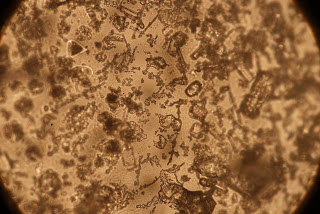I hurried back from Surrey to see Simon Fujiwara (aka The Great Fuj) give his lecture this year - the third lecture of his I have seen in Falmouth. After hearing rumours that the work he presented in his first talk were all faked and constructed, he has become a bit of a mystery. I also attended the seminar with him last year, which was very insightful into his working method and has continued to inspire my practical approach.
I followed what he was saying with skepticism (because of the rumours) but with keen interest. The way in which he decides to imagine things, pursue 'what if...' scenarios around the world and create extensive narratives about fictional characters is very compelling - I saw it as a kind of freedom, a playfulness, a lightheartedness, but used to pick up on quite serious cultural, even political issues. I kind of wish I could follow my imagination in this way...but maybe that is why I want to do set design, so that I can chase a 'what if' with enough justification to do so. I think my work that I am doing now has a certain regard for truth that I would need to uphold to convey any kind of meaning. Having said this, Fujiwara still manages to reveal things about the world that might not be brought into focus without his suggestion, and that is substantial and profound in its impact. I thought my interests aligned very strongly with the work that he spoke of in his second lecture - his 'Here is Now' exhibition at the Southbank Center in 2014. Here he had chosen objects that spoke of British Culture and presented them together , but without name labels, which highlighted how ingrained and recognizable the objects and images are in our culture and visual language.
After he had finished speaking, someone from the audience asked the question "what is the work?" (e.g. is this lecture the work, or is it his journey collecting research, or is it the final product...). Fujiwara replied, to my amusement, that it is up to us to decide. He said that every step within a project could be the project itself, sometimes he finds the intermediate stages more interesting than an exhibition work but this is impractical. Fujiwara mentioned that there is no hierarchy between the research and the exhibition works. This resonates with me very greatly - I really struggle to pin down works and find it frustrating that small thoughts and observations are not valued above final pieces. I often lose interest in final works too, they seem to lose momentum if they are too thought-through, and sometimes I wish it were up to the audience to look at my thoughts and everyday observations (such as those I share on Instagram), and for them to function as artworks.
Whilst doing research for my dissertation, I came across a quote about Broodthaers that I think links with Fujiwara's approach:
"A Kitchen
Cabinet, 1966-68, for example, contains a range of the
artist’s signature objects, from mussel and snail shells to
eggs and egg cups, glass jars and advertising images. They
act as propositions and generate ideas as part of an ongoing
process rather than to provide finished statements. This studio nature of Broodthaers’s works, with a hazy line
between ideas and completed pieces, gives them their energy
and suggests why they appeal so strongly to contemporary
practitioners." (Marcel Broodthaers - Milton Keynes Gallery -
Schultz, Deborah. Art Monthly , March 2008, Issue 314, p27-28, 2p)
One final observation from the lecture was Fujiwara's rejection of the word 'research'. he said using that word makes it sound as if it is a separate and conscious activity instead of part of everyday life. We are always researching and there can be no distinction; (Great words from the Great Fuj).















































